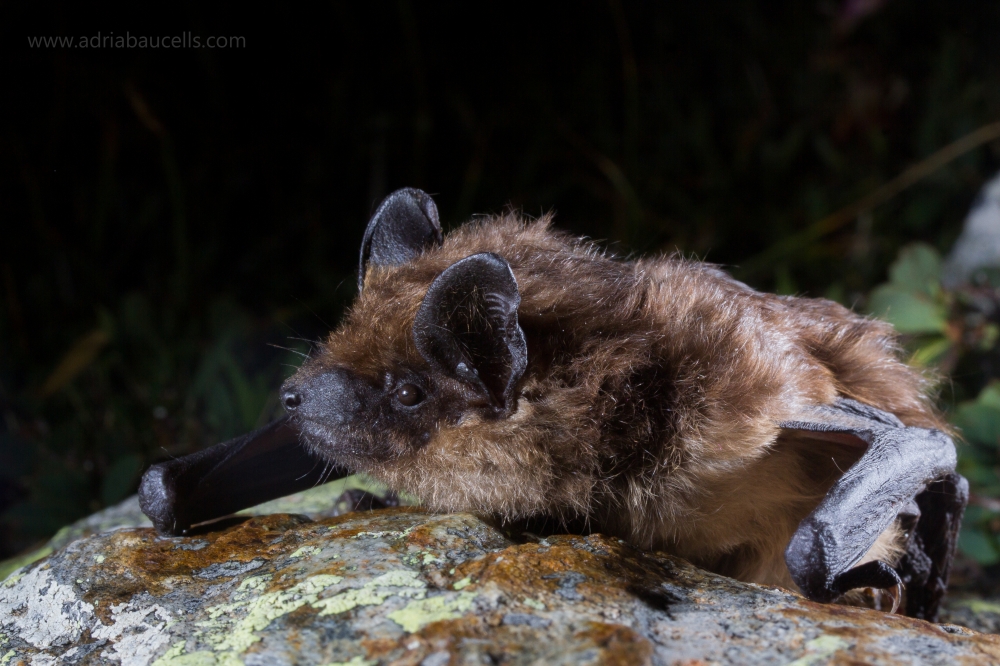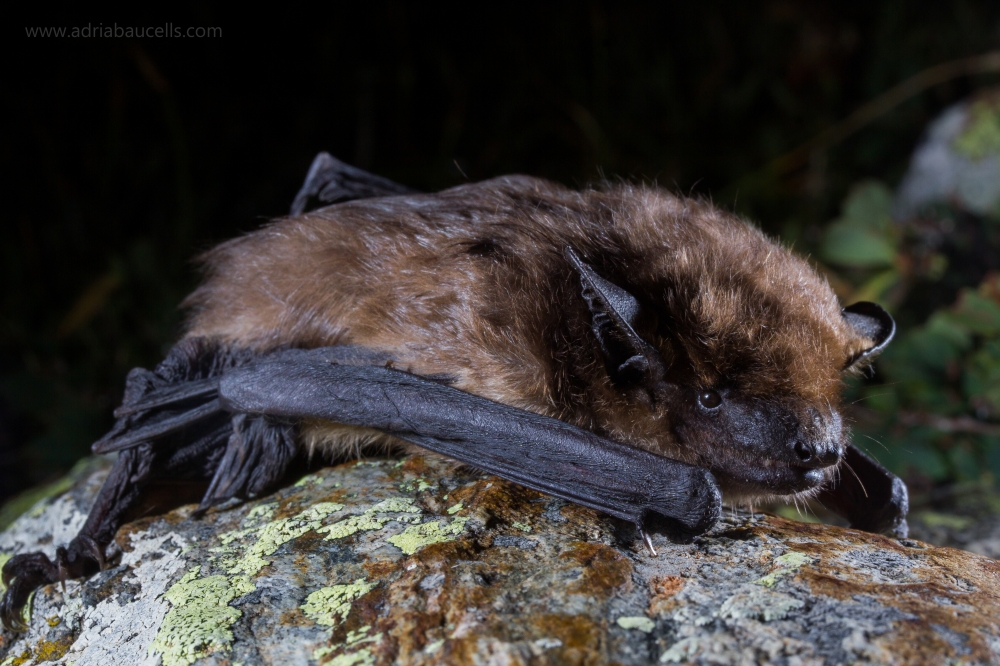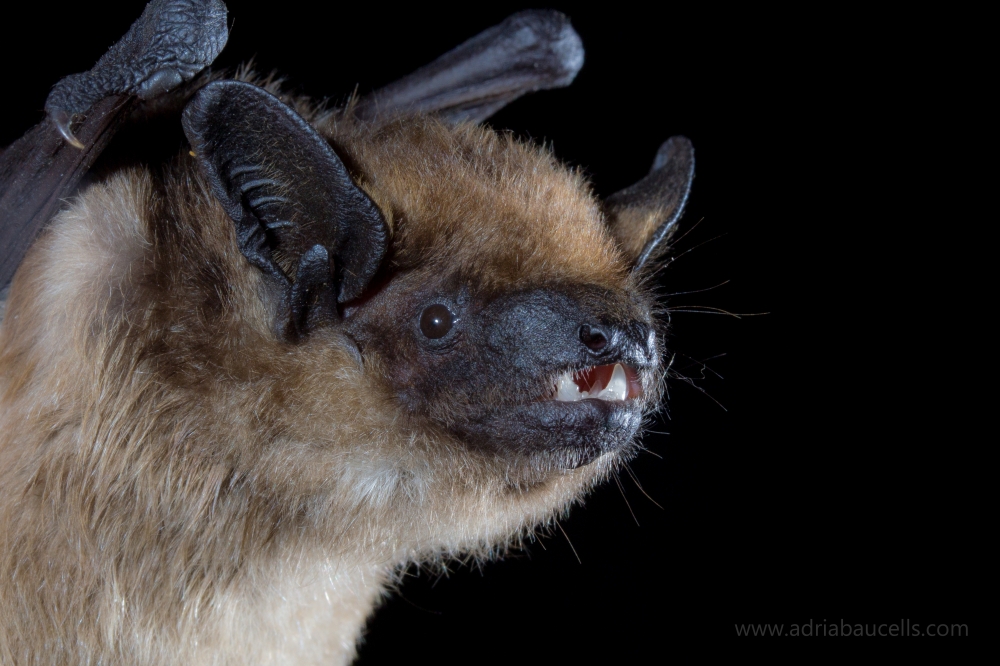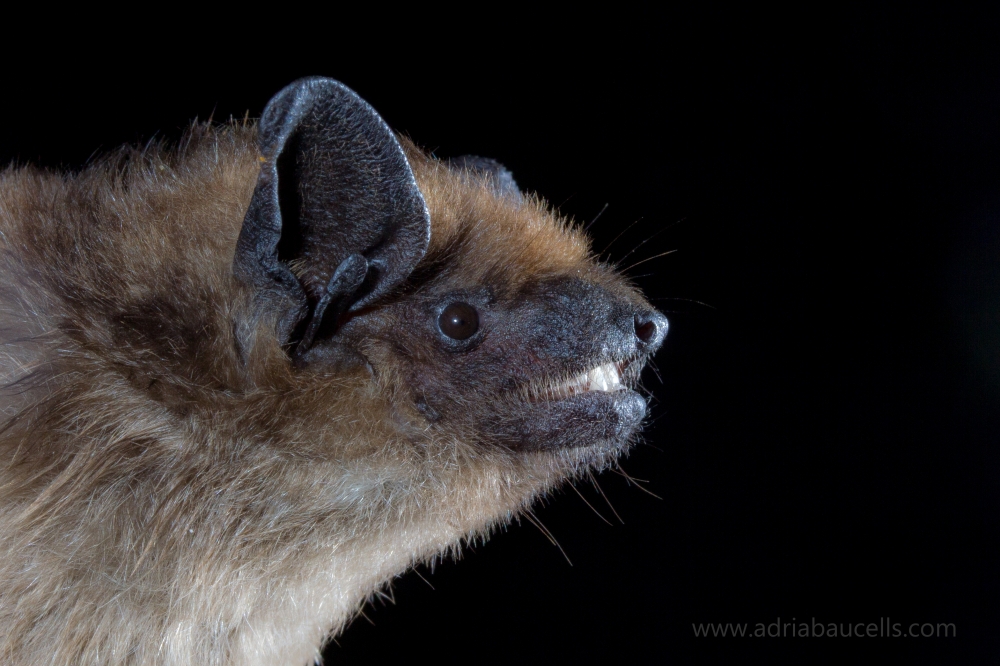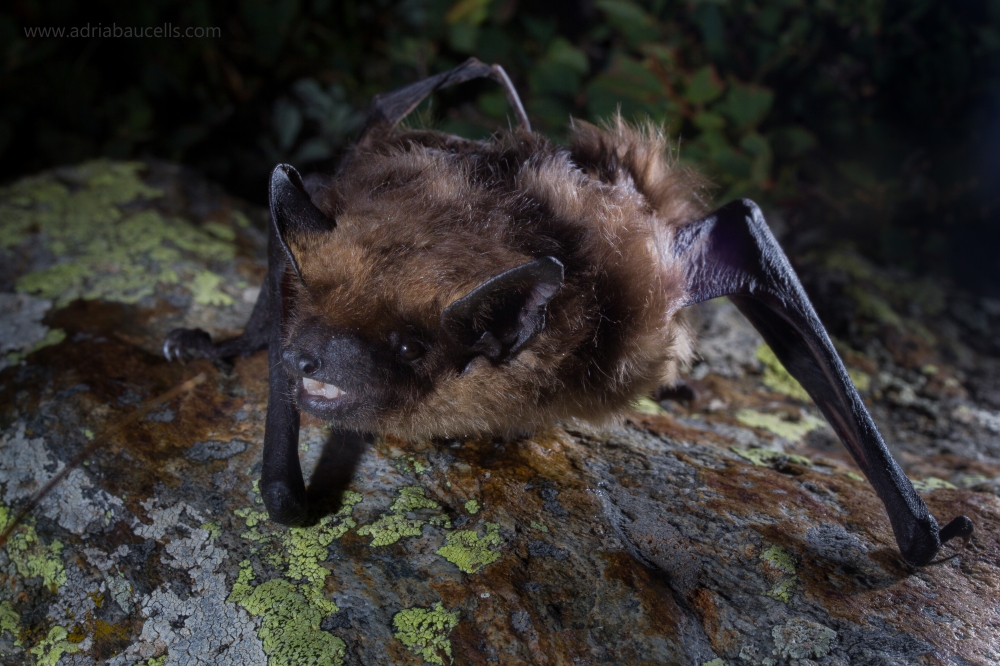Serotine bat
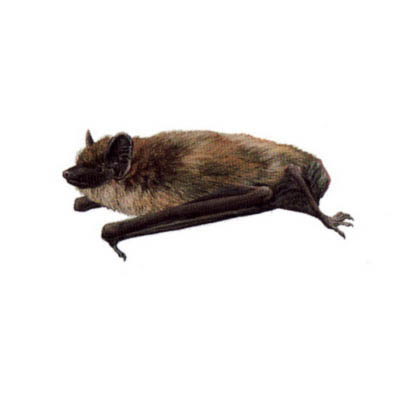
Eptesicus serotinus (Schreber, 1774)
Vespertilionidae
Least Concern
| Other names | |
|---|---|
| Catalan | Ratpenat dels graners eurasiàtic |
| Spanish | Murciélago hortelano |
| English | Serotine bat |
| French | Grande Sérotine |
| Basque | Baratze-saguzar |
| Galician | Morcego das hortas |
Description
Large-sized bat with a robust body, ranging from 62 to 82 mm in head-body length, with a wingspan of about 370 mm, a forearm between 48 and 58 mm, a tail between 39 and 65 mm, and weighing between 18 and 25 grams. This species is characterized by a long and robust snout. The dorsal fur, dark brown with bicolor hairs (dark base and yellowish tips, especially in the southern part of its distribution), slightly differs from the ventral fur, which is grayish or light brown. The skin of the wing membranes and the face, on the other hand, is dark or blackish. The ears, relatively long, measuring between 14 and 22 mm in length, are thick and have a clearly triangular shape with rounded tips.
It is difficult to differentiate from the Meridional serotine bat (Eptesicus isabellinus) and the Anatolian serotine bat (Eptesicus anatolicus), and can only be distinguished based on dentition and the shape of the penis. In contrast, the northern bat (Eptesicus nilsonii) is much smaller.
Fotografies
Distribution
Its distribution includes temperate countries in Europe (almost throughout the continent) and Asia. It ranges from the southern part of the Scandinavian Peninsula and the United Kingdom in the north, to the Iberian Peninsula in the west (absent in the southern half), and to China in the east. It is also found in southeastern Russia, the Caucasus region, northern and eastern Turkey, as well as in the entire northern Mediterranean and various Mediterranean islands. Outside of Europe, it can be found in Iran, Turkey, Lebanon, Israel, Syria, Kazakhstan, Turkmenistan, Uzbekistan, Afghanistan, Kyrgyzstan, Tajikistan, Mongolia, and China.
Roosts and phenology
In Central Europe, shelters are almost exclusively in various types of buildings, as well as refuge boxes and occasionally tree holes. In the Mediterranean region, besides buildings, they also occupy cracks in rock walls and cliffs, as well as cave entrances. Breeding shelters are typically in crevices or in the roofs of abandoned buildings and usually consist of about 10-60 adult females, occasionally up to 300 individuals. Colonies form in early May and disperse in August. Males form groups of up to 20 individuals. Births occur in mid-June, although they can extend until late August. Offspring are weaned at 4-5 weeks of age.
Capture data suggests that sexual maturity is reached in the second year of life. Mating occurs between September and October. It is a sedentary species, and hibernation shelters are usually less than 50 km from breeding shelters. Detected movements of up to 330 km likely correspond to young individuals dispersing. Hibernation shelters are also often associated with human structures, such as attics or crevices in abandoned buildings, although isolated individuals and small groups hibernate in large caves.
Habitat and diet
This species is typical of temperate and semi-arid zones, although it can be found in various Mediterranean and Central European habitats. It often hunts in open spaces such as agricultural areas, traditional crops, meadows, pastures, or urban parks. It is also common in forest margins, near water bodies, and in the centers of towns and cities. It has been detected from sea level up to 1,440 meters in altitude, although breeding colonies are not typically found above 800 meters.
The diet of this species is highly flexible, adapting to the availability of prey based on habitat and the time of year. During the flight seasons of these species, dung beetles constitute the majority of their diet. Additionally, spiders, hemipterans, and hymenopterans also make up a significant portion of their prey, as well as dipterans in the spring. Prey is captured in vegetation margins, around individual trees, or in open areas. It typically exhibits a straight and fast flight that abruptly stops when it detects prey. While most prey is captured in the air, it occasionally catches insects directly from the ground and vegetation.
Echolocation
Its echolocation is highly flexible and varies greatly depending on the environment in which it is flying. Its calls are characterized by having two components: a first component with short-frequency-modulated (FM) calls, and a second component of quasi-constant frequency (QCF) at relatively low frequencies (FM/QCF structure). In open areas, the calls may lose the modulated section and become almost flat. The frequency of maximum energy (FME) is usually between 22 to 32 kHz, being sharper in closed environments and deeper in open environments. This species falls into the phonic group Eptesicus/Nyctalus/Vespertilio, which includes several European species.
Status
According to the IUCN Red List, it is considered Least Concern, with a stable population trend. This species is protected by national and regional laws in many countries, such as the Eurobats agreement, the Bern Convention, and the European Union's Habitats and Species Directive. The species is abundant throughout almost its entire distribution range, although specific countries have shown positive trends (e.g., Denmark). Nevertheless, the disappearance of traditional agriculture and the destruction and renovation of old buildings can lead to local declines.
